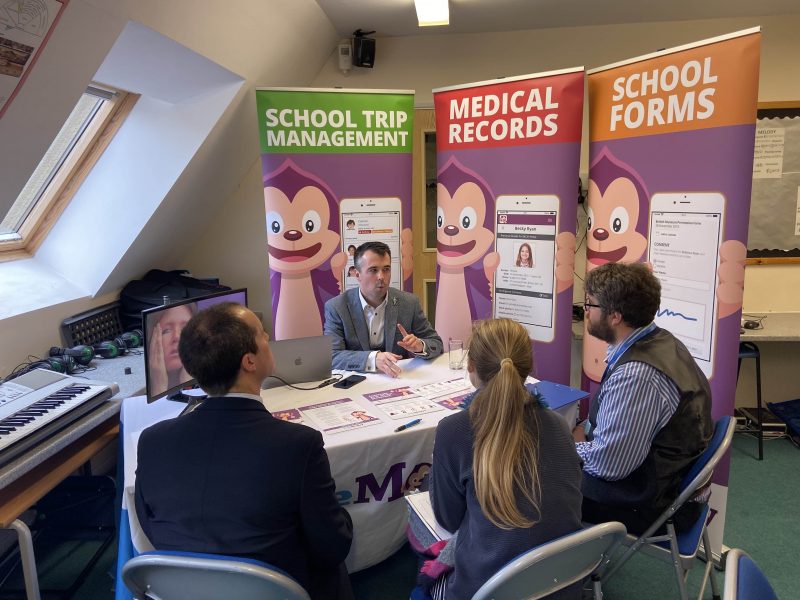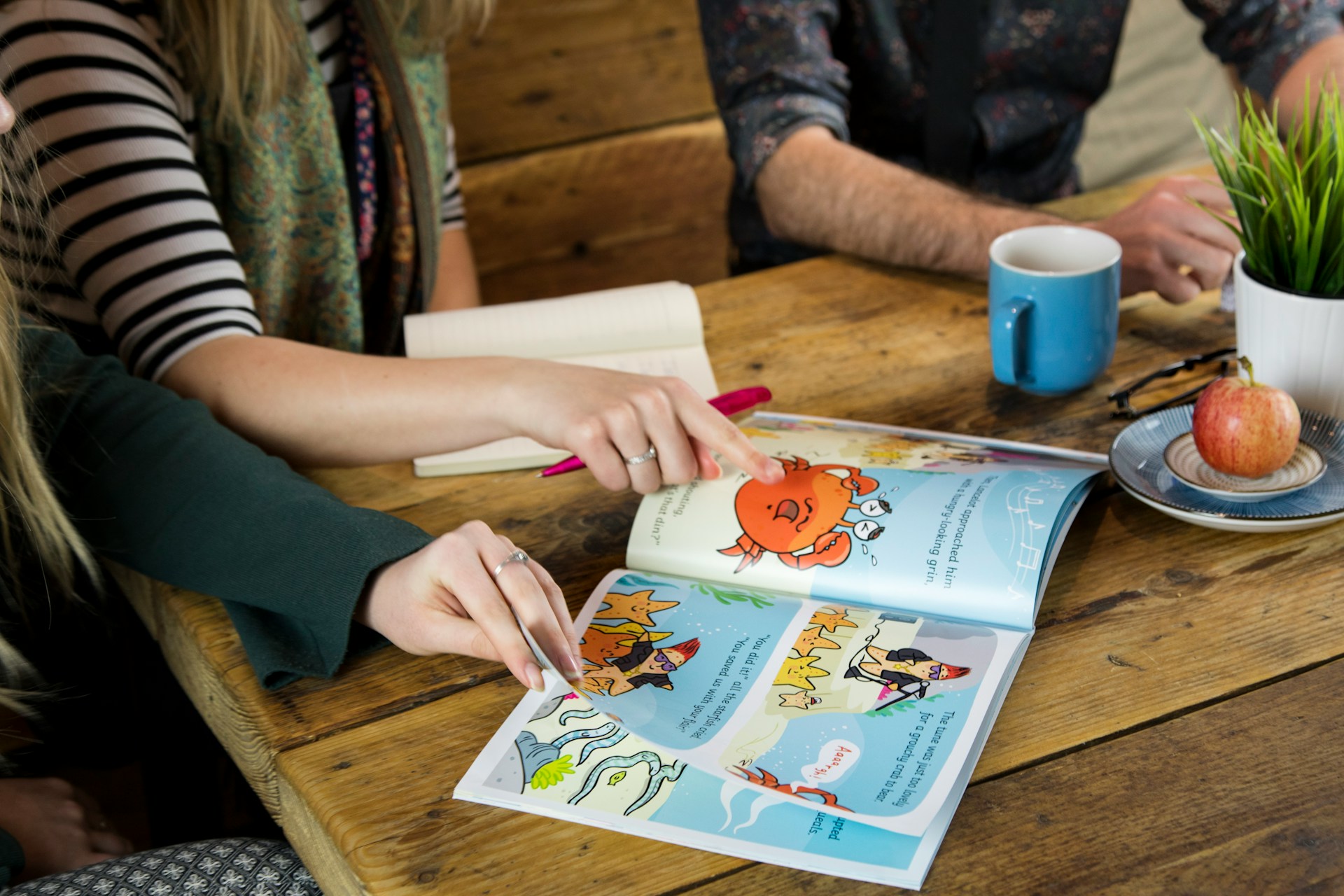

For some, gift giving is a superpower. They’ll know what to buy everyone, have it planned well in advance, and keep it under budget. Superpower.
It’s likely their love language, too. However you feel about them, gifts are a way to show affection. And yet not everyone likes getting them. You might have friends and family members every year who insist on not ‘doing gifts’.
“No gifts!” you might say. “What sorcery is this?” The thought of getting free stuff should excite anyone. And yet you have friends and family who may well insist.
What gives?

In case you were wondering if you’ve clicked on the right link, you’ll be relieved to read that I’m not really talking about gift-giving.
This is about storytelling.
It’s cliché, I know. But when you tell a story, it’s kind of like a gift. After all, a story is something you can share. It gives people joy. And stories can bring people together.
However, as a member of staff in a school or an educator, how many times have you told a story without expecting something in return?
And by something in return, I mean written work. Worksheets. Analysis. Character profiles.
Like some gifts, some storytime unfortunately comes with strings attached. No one likes obligation, even at a young age. And in the same way, you might prefer to opt out of gift-giving entirely to be free of any obligations, you can see the same decisions made by children when it comes to stories, too.
If story = work, why would you read them in your leisure time?
But once you make it so that story = reward for a particular child, even if they struggle with reading blips through secondary school and beyond, you drastically improve the odds in favour of reading for pleasure.
As you’ll know, it’s rarely that simple. At the end of the day, educators have a job to do. Most of the time, when you read a story, some element of work will have to go along with it. That is unavoidable.
Even from a KS1 perspective, targets will loom. Whether you’re teaching at school or at home, you might be keen to make sure children are decoding words, know their phonics, and are writing basic sentences. These are vital skills.
But surely it’s important everyone keeps looking for ways to stop and smell the roses, too, right?
This only has repercussions further down the line, otherwise. And you only have to look at the recent literacy reports to see this in action. Numbers of those reading for pleasure aren’t falling down the chimney, so much as they’re plummeting. It’s the lowest it’s been in years.
Before you feel the heavy weight of responsibility leaning on your shoulder, this isn’t just on educators. How could you be expected to teach the skills and a love of reading to children all in one go, especially on top of everything else?
Well, be that as it may, stories and books may still turn this round yet. And there is something you can do, a simple change.
Now, to be clear, the onus isn’t just on those of you working in schools. This requires everyone to step up in some way. But if you are working in a school, I can appreciate why this may sound frustrating. There’s very little wiggle room for stories and reading for pleasure.
This is why schools must make the most of the wiggle room when it comes along.
And this is where I believe you can wiggle.

End-of-term lessons are gold dust.
If you’re lucky enough to have finished a term’s teaching with a few lessons to spare, or have your class for an afternoon before the holidays, you probably follow in the footsteps of many teachers before you.
You watch a film, plan a quiz, or host a carousel of activities. All educational of course.
But this is the perfect time to tell stories for the sheer joy of telling a story.
For a start, you have more creative freedom to pick a story. You can also set the pace and atmosphere however you like. It links to the curriculum with ease. There’s also less pressure to meet targets or set up activities. All you need is a book, and ideally an audience.
Sure, some children might not be thrilled by the idea at first. This rings true for children who already love their films and games. But stories and storytellers have a way of drawing people in.
And as the storyteller, you can remove most of the hurdles.
When reading for pleasure is a rare treat, you want to make the most of the time you do have in the classroom.
For those of you who are well-versed in the art, you’re probably thinking about character voices and emoting with the story already. And with the experience of teaching under your belt, you’ll have a lot of other tricks that’ll make you a brilliant storyteller.
Looking for some more inspiration? Hopefully, this next section will give you a helpful starting point.
Is it a spooky story? Is it festive? Is it summertime? It’s rare that your classroom isn’t decorated to reflect the time of year. You might as well take it one step further.
In an interview with storyteller James Campbell, he says you can lose an audience incredibly fast when there are screens around. Even when they’re off.
If this proves to be true with your class, take action. While a smart board is a brilliant way to create an atmosphere with a log fire, it’s no big loss to go without. If it’s too much of a challenge, face away from screens where you can.
Good stories should suspend their audience in disbelief.
Folktales have a rich tradition in storytelling. In this article on teaching with folktales with Twinkl, writer Joanne McFall states these ancient types of stories teach us about places, people and values. All while being accessible to so many people.
Folktales are an amazing tool. Not just because of the most famous stories in folklore, either. Local legends have a way of enchanting communities. Many of which will have been shared with children as a way of teaching life lessons once upon a time.
While it’s one thing to champion grabbing a book off the shelf, myths and legends are a limitless resource too, full of mesmerising stories. And if you were looking for a shorter story, a folktale would be a perfect fit.
All you’d need is a few pages of A4.
None of this would be possible without the places that strive to make books and stories as accessible to children as possible.
So if you’re also looking for resources to help you dig out the best stories, here is a quick list, which keeps literacy at the heart of everything they do.
Twinkl Originals write and produce books for children. They have a whole library which you can filter by age group and language.
They also have opportunities to join a book club, and there are a few free ebooks up for grabs as well.
Love Reading 4 Kids is a book recommendation platform and bookstore with a social purpose: to help children access more books.
Not only can schools get discounts here, but buyers can opt to donate 25% of their purchase to support other schools in need as well.
The Book Trust is a charity set up with the goal of supporting schools with literacy provision, especially for EYFS. They provide virtual author visits and free teaching resources around reading.
But it’s The Letterbox Club, which is truly worth a look.
Stories are a gift we give the next generation. The next time you think about your literacy curriculum, take a good look at the storytelling. Ask yourself:
It’s time to treat stories as they were intended back when we shared them around a fireplace. Sure, they were teaching tools. But they were entertainment as well. They were a way to pass the time, to fire up imaginations, and to marvel at the universe.
All wrapped up in a nice, neat bow.